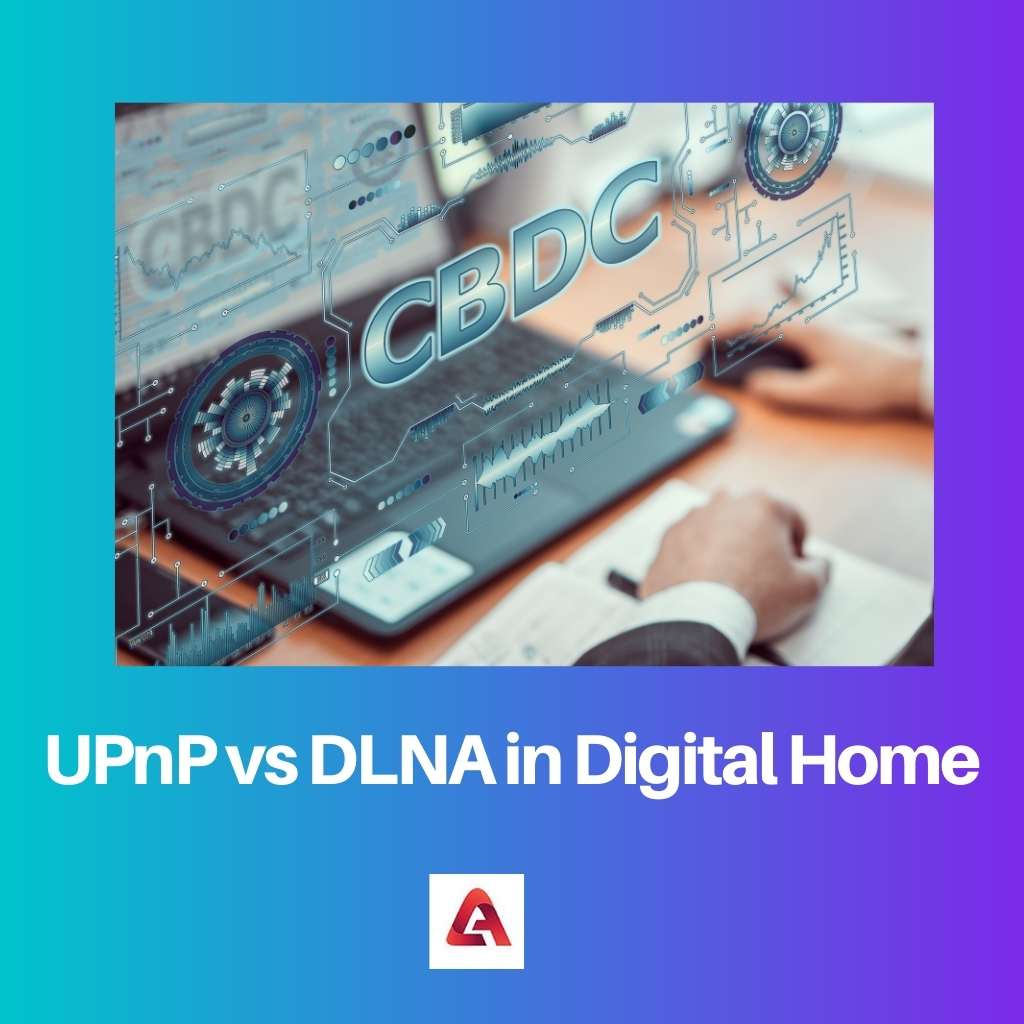With advancements in technology, most household tasks have also been digitized. Be it printers, PCs, or televisions, everything is a necessity now. Furthermore, there are times when connecting these devices becomes important.
UPnP and DLNA in digital homes are two networks that enable the connection of several digital sources within the household. While the two may seem similar, they have considerable differences based on uses, relationship, and devices covered.
Key Takeaways
- Both technologies facilitate communication and sharing between digital devices within a home network.
- UPnP (Universal Plug and Play) enables devices to discover and interact with each other automatically. At the same time, DLNA (Digital Living Network Alliance) is a set of standards that ensure compatibility between multimedia devices for sharing content.
- DLNA builds upon UPnP as a foundation to ensure devices can share media content across the network effectively.
UPnP vs DLNA in Digital Home
The difference between UPnP and DLNA in a digital home is that while UPnP is relatively young in age, DLNA is fairly mature. In addition, UPnP covers a less broader scope as compared to DLNA because it includes management systems and protection systems. In fact, DLNA makes use of UPnP to control a wide variety of devices.

UPnP in a digital home is a bunch of networking protocols that allow networked devices to become aware of each other’s presence and set up functional network services.
The steps involved in the UPnP mechanism are description, discovery, control, eventing, and presentation. Over the years, UPnP has become a preferred source of IP networks in small offices and houses.
UPnP is independent of the need for any operating system or programming language.
The DLNA in a digital home allows users to share all kinds of information such as videos or photos with one another. The DLNA network comprises the Digital Media Server and the Digital Media Player.
In addition, DLNA devices may operate on a wired or wireless network. It is also not advisable to spend a large sum of money on DLNA capabilities.
Comparison Table
| Parameters of Comparison | UPnP | DLNA |
|---|---|---|
| Full Form | UPnP stands for Universal Plug and Play. | DLNA stands for Digital Living Network Alliance |
| Relationship | UPnP devices include DLNA devices. | DLNA devices are derived from UPnP devices. |
| Type | UPnP are networking protocols. | DLNA is a device standard. |
| Devices covered | UPnP is supported by more devices than DLNA is. | DLNA is supported by fewer devices as compared to UPnP. |
| Age | UPnP is relatively young in age. | DLNA is fairly mature |
What is UPnP in a digital home?
UPnP stands for Universal Plug and Play. UPnP refers to a bunch of networking protocols that allow networked devices to become aware of each other’s presence and set up functional network services.
Some examples of the connected devices are personal computers, printers, mobile devices, internet gateways, and WiFi access points.
UPnP makes extensive use of standard TCP/IP and Internet protocols. This, in turn, allows UPnP to work with existing networks without any difficulty.
An interesting feature of UPnP is that it is independent of any specific kind of physical medium, operating system, or programming language.
Over the years, UPnP has become a preferred source of IP networks in small offices and houses. Usually, UPnP is already enabled on the router.
UPnP in a digital home has some specific components. These are devices, services, and control points. A UPnP device can comprise a wide variety of services and nested devices.
In addition, a UPnP device provides functionalities or services that can be availed by the other devices in the network. The UPnP control point serves the purpose of discovering and controlling other devices.
There are five steps involved in the UPnP mechanism: description, discovery, control, eventing, and presentation. UPnP serves as the building block of networking standards such as Digital Living Network Alliance, and NPMR.
Today, there are several tools available in the market for a successful installation of UPnP in households.
What is DLNA in a digital home?
DLNA stands for Digital Living Network Alliance. The DLNA allows users to share all kinds of information such as videos or photos with one another.
It serves as a bridge between the different entertainment devices in the household. For example, DLNA devices allow individuals to watch a movie from the PC on their television screens.
There are three categories of DLNA devices: Home Network Devices, Home Infrastructure devices, and Mobile Handheld Devices. A DLNA certification assures that the device will work.
Thus, DLNA devices operate on both wired and wireless networks for the transmission of media within the household. Some DLNA certified devices are TVs, smartphones, and tablets.
There are several DLNA devices in the market. The DLNA network comprises the Digital Media Server and the Digital Media Player.
While the digital media server consists of the content to be displayed or shared, the digital media player actually plays the digital content. At most times, DLNA devices are easy to use and cost-effective. Thus, they can easily be afforded by the general public.
Users must ensure that they buy the right kind of DLNA devices. While some DLNA devices may operate on a wired network only, others may solely operate on a wireless network.
It is also not advisable to spend a large sum of money on DLNA capabilities. Therefore, DLNA networks offer an easier source of connection within household devices.
Main Differences Between UPnP and DLNA in Digital Home
- While UPnP stands for Universal Plug and Play, DLNA stands for Digital Living Network Alliance.
- UPnP covers a less broader scope as compared to DLNA because it includes management systems and protection systems.
- UPnP devices are incorporated in DLNA devices.
- UPnP is supported by more devices than DLNA is.
- While UPnP is relatively young in age, DLNA is fairly mature.




